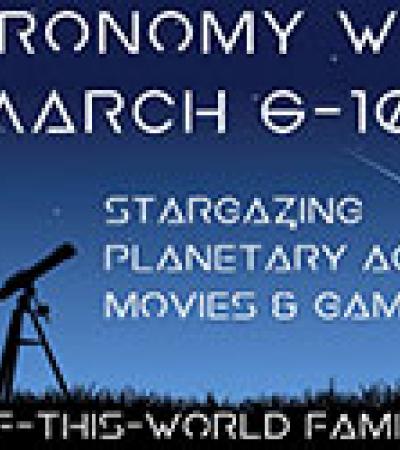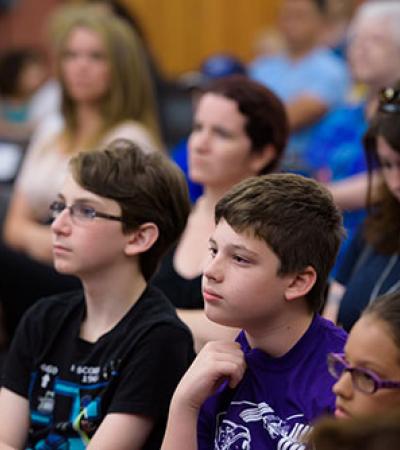Families were invited to the library for an afternoon science program that explored the topic of light. Activities included making a spectroscope, color mixing, lasers, playing with convex and concave lenses, and exploring the law of reflection.
The program was offered as part of our NASA@ My Library grant from the Space Science Institute (SSI) and ALA. However, most of the activities we used are freely available in SSI's online Star_Net STEM Activity Clearinghouse, so a similar program could easily be recreated by someone without grant support.
Our goal was to provide STEM activities for children and to expand the community's awareness of library programming.
Advanced Planning
We planned the event to take place during an early dismissal day at our local school district.
We collected materials that we already had at the library and also ordered a diffraction grating and a spectroscope online. We bought a very expensive prism, which did not work much better than a regular prism; a physics professor from the University of North Dakota helped us work on it for an hour before we could replicate Newton’s experiment with the diffraction of light with it.
A much more useful purchase was a geometric optics demo set that had lasers, lenses and more. We also used a light kit with lasers, lenses and mirrors borrowed from the Dakota Science Center. For the spectroscopes that participants could make and take home, we used cereal boxes and empty confetti tubes, which we collected prior to the program date.
Planning for the activities included library staff and the director of the Dakota Science Center and was done months in advance to ensure that we had all the materials needed. The lessons were also all tested beforehand using lesson plans from the Dakota Science Center teacher resource guide. Our library was one of 75 nationwide awarded the NASA @ My Library project grant in 2017, and we were able to use some of the activities and materials that our library received as part of the project to host our Light and Color program.
An unexpected challenge was that the spectroscope was damaged by a young patron, and we had to purchase a new one.
Marketing
We distributed a flier that included NASA@ My Library program dates and times and also placed an ad in the elementary public schools e-newsletter. (See the flier under Attachments.)
Budgeting
The spectroscope cost around $100, as did the light kit with the lasers and lenses. All of the other supplies for the program cost around $50 total.
Day-of-event Activity
The program was free to attend. The Dakota Science Center loaned the library the light kit, which helped alleviate costs.
Program Execution
The event was held in the library meeting room because we needed it to be dark. We also had to set up the room so that the lasers could not harm the children.
Children gathered around tables for demonstrations on refraction, reflection and lenses. Two staff members led the program, which lasted one hour. The children first learned about the electromagnetic spectrum in an activity using UV beads, then they had the opportunity to make a spectroscope to take home.
To make their spectroscopes, the participants followed instructions provided in this video:
Since we were using quality diffraction grating, this simple process worked better than any other model we have tried. We often wonder if it has anything to do with the length of the tube?
This was our favorite program because the kids were so fascinated with what happened to the light in the spectroscopes they made. Feedback was very positive from everyone, including the caregivers. Approximately 20 people attended this program, and we have repeated this program because of the positive feedback.
Advice
Do not let really young children handle the expensive equipment.
Supporting Materials
- Feedback (Coming Soon!)
- Programming Librarian Facebook Group



